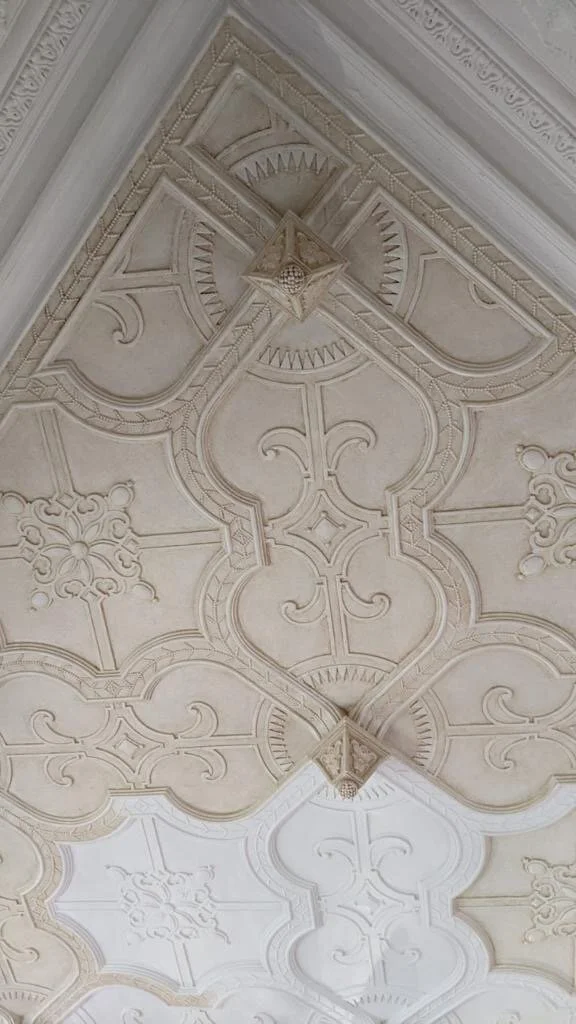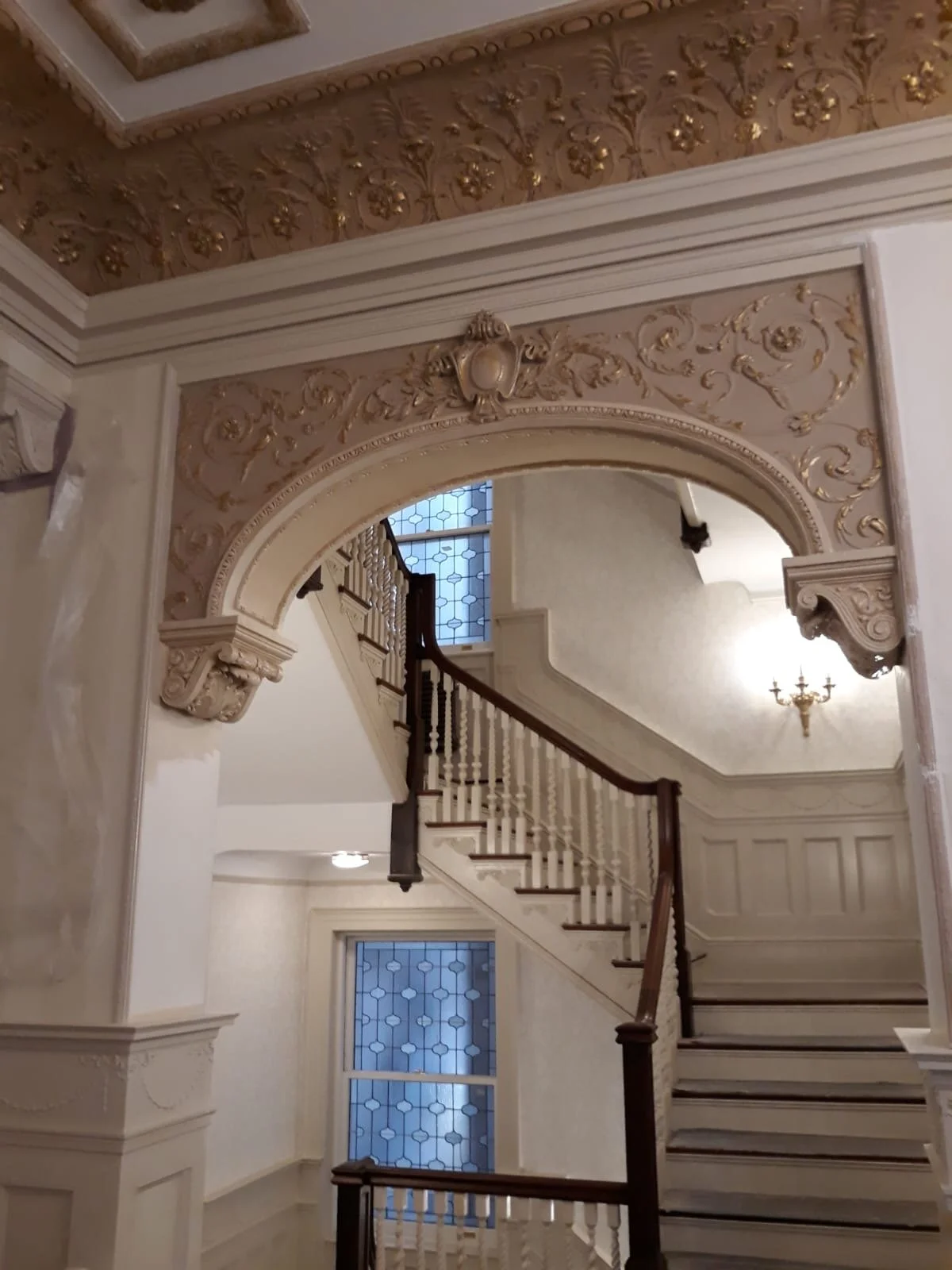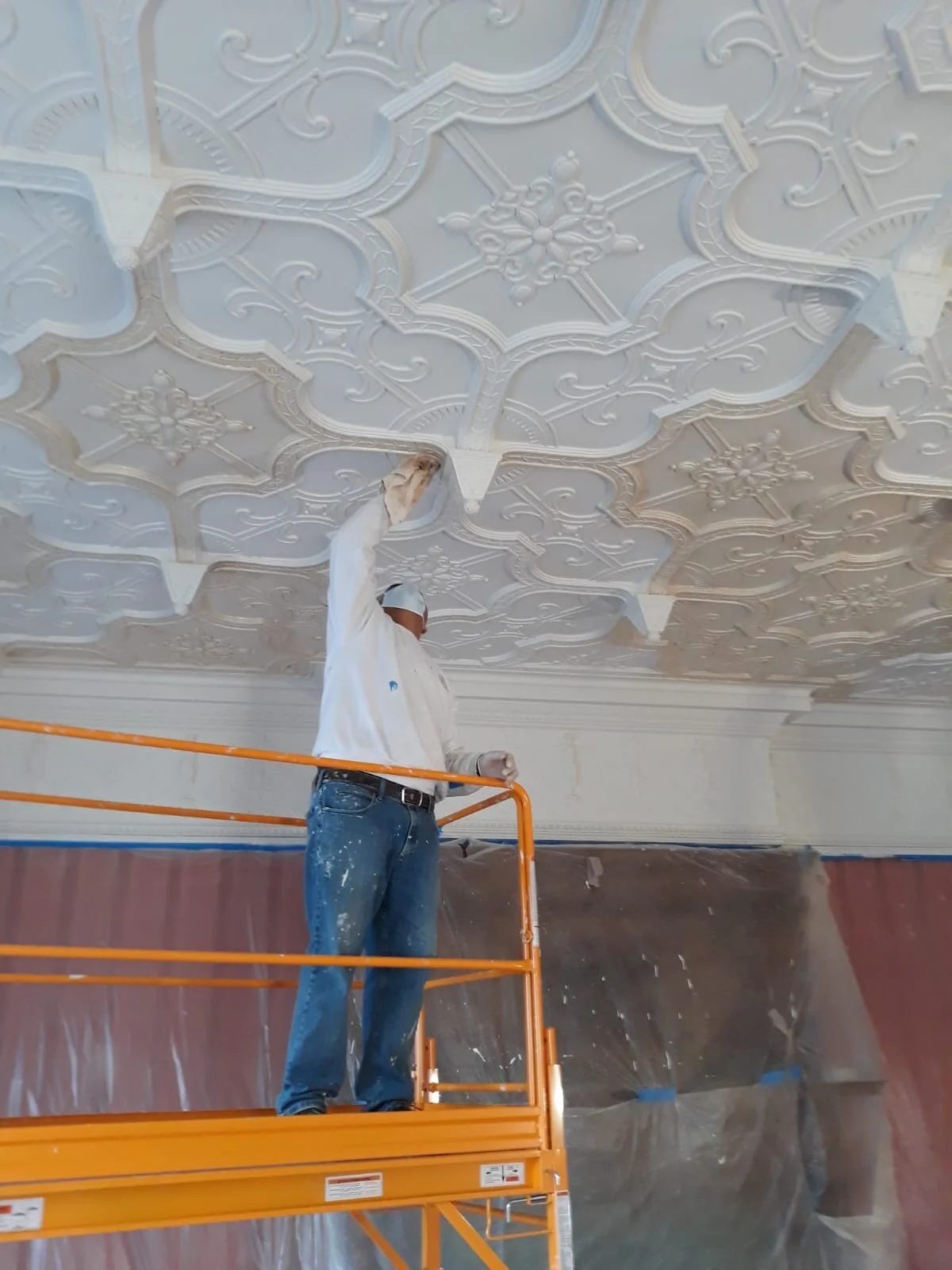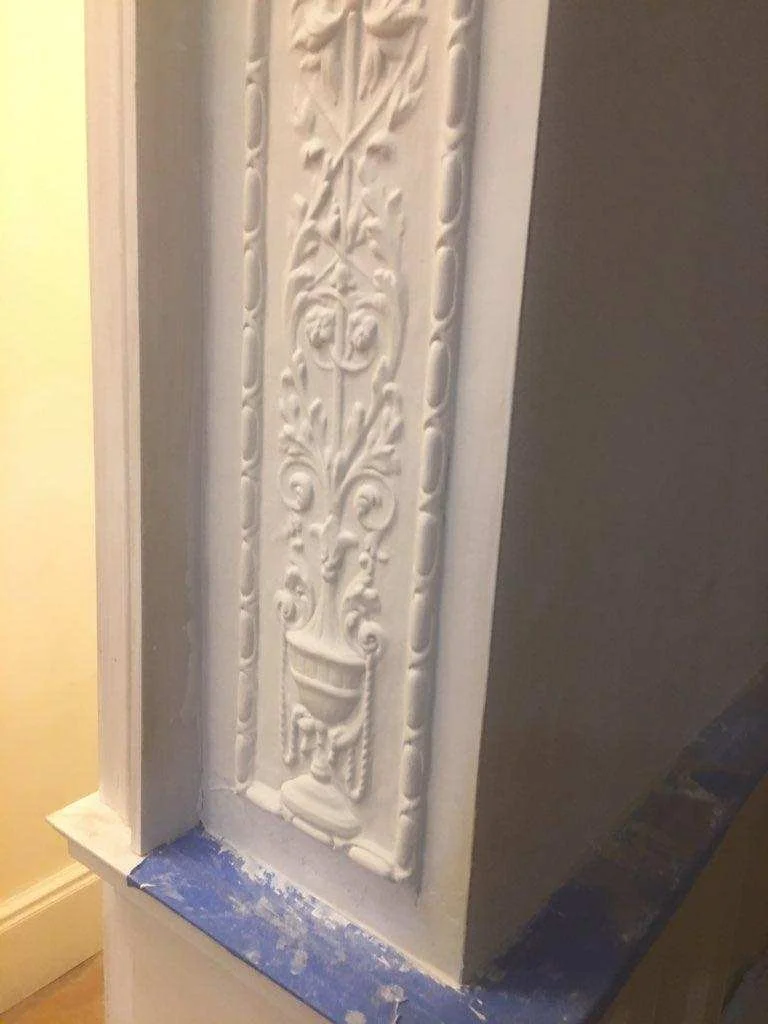Ornamental Plaster
Ornamental plaster restoration is the process of repairing and restoring decorative plaster elements in buildings, such as moldings, cornices, brackets, archways, and medallions. It requires a skilled craftsman with knowledge of plaster materials, techniques, and tools. The following is a description of the means and methods used in ornamental plaster restoration.
Materials:
Plaster: The primary material used in ornamental plaster restoration is plaster, which is a mixture of water, lime, and sand. The type of plaster used will depend on the specific application and the condition of the existing plaster. For example, fine-grade plaster may be used for intricate details, while coarse-grade plaster may be used for structural repairs.
Bonding agent: A bonding agent is often used to improve the adhesion of the new plaster to the old plaster. This is especially important when the old plaster is in poor condition or has been damaged.
Pigments: Pigments may be used to match the color of the existing plaster. This is often done by mixing dry pigments with the wet plaster before it is applied.
Tools:
Trowels: Trowels are used to apply the plaster to the surface. The type of trowel used will depend on the size and shape of the area being repaired. For example, a small, pointed trowel may be used for intricate details, while a larger, flat trowel may be used for larger areas.
Scrapers: Scrapers are used to smooth and finish the surface of the plaster. They can also be used to remove excess plaster or to carve out details.
Chisels: Chisels may be used to remove damaged or deteriorated plaster. They can also be used to create decorative details in the plaster.
Methods:
Assessment: The first step in ornamental plaster restoration is to assess the condition of the existing plaster. This may involve examining the plaster for cracks, chips, or other damage, and determining the extent of the repairs needed.
Repair: Once the damage has been assessed, the next step is to repair the plaster. This may involve filling in cracks or chips, or rebuilding damaged areas. The repair process will depend on the specific damage and the type of plaster being used.
Finishing: After the repair work is complete, the plaster must be finished to match the existing surface. This may involve sanding, scraping, or polishing the surface to achieve a smooth finish. If necessary, pigments may be added to match the color of the existing plaster.
Overall, ornamental plaster restoration requires a combination of materials, tools, and techniques to repair and restore decorative plaster elements in buildings. It is a skilled craft that requires a thorough understanding of plaster materials and techniques.









